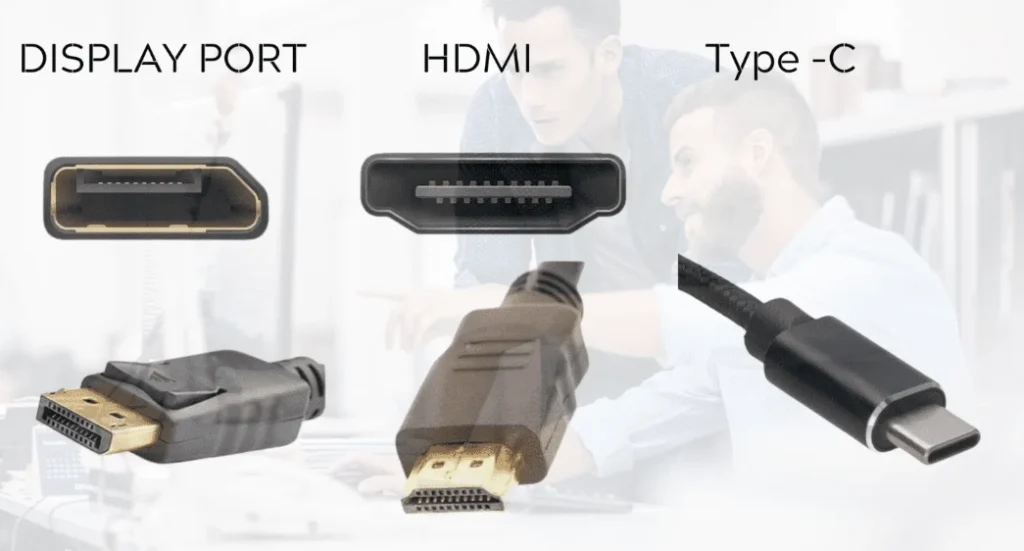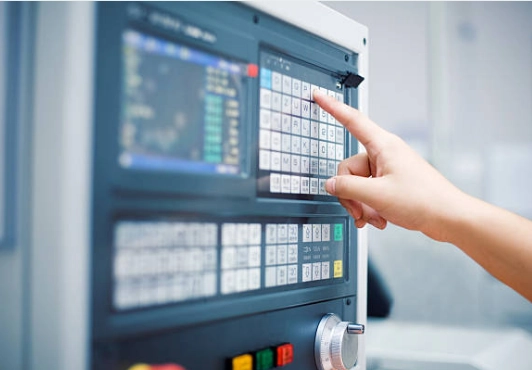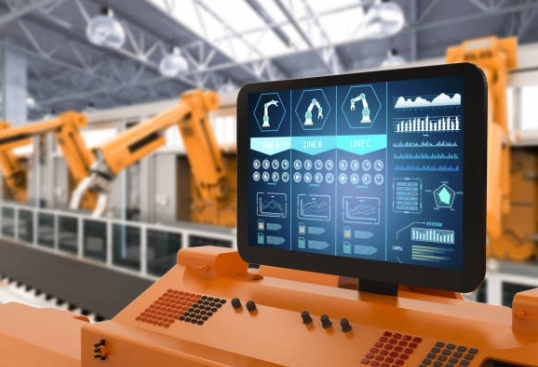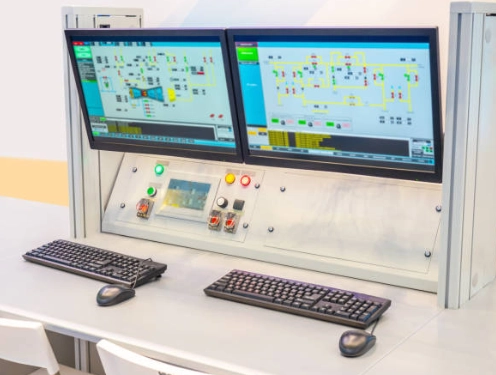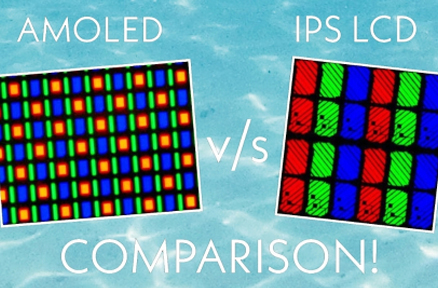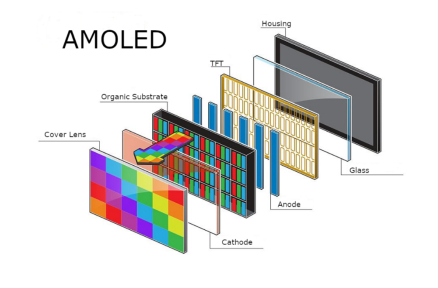Introduction
In industries where accuracy, toughness, and reliability matter, picking the right display interface technology is super important. It keeps operations running smoothly. As industrial tasks get trickier and need more data, there’s a bigger need for interfaces that give clear video, easy connections, and fast data transfer. Technologies like HDMI, DisplayPort (DP), and USB-C are top choices. Each one has special strengths that fit different industrial needs.
HDMI (High-Definition Multimedia Interface)
Overview
HDMI is a super common video interface. It’s known for sending high-quality video and sound through one cable. It started for home electronics but now works great in industrial settings too. That’s because it’s simple and works with many devices.
Advantages in Industrial Applications
HDMI is used almost everywhere in both home and work settings. This makes it a trusty choice for lots of uses. It connects easily with most modern screens, projectors, and display systems.
HDMI cables are easy to use with a simple plug-in setup. This cuts down setup time and reduces mistakes, which is key in places where every minute counts.
A big plus is that it carries both sound and video in one cable. This cuts down on extra wires and makes managing cables easier in industrial displays.
Limitations
HDMI cables can only send high-quality signals about 15 meters without a booster. In big factories, this can be a problem if displays are far from the source.
Also, HDMI can struggle with super clear (UHD) video, especially over long distances.
Cheaper HDMI cables can pick up electromagnetic interference (EMI). This makes them less good in places with heavy machines.
Best Use Cases
HDMI is great for control rooms or workstations where screens are close to the video source.
It’s also good in industrial spots that need both video and sound, like training rooms or customer display areas. Its easy setup and steady work make it a solid pick.
DisplayPort (DP)
Overview
DisplayPort is a newer interface made to replace older ones like VGA and DVI. It’s known for handling lots of data and super clear images. It’s a key tool for high-performance industrial displays.
Advantages in Industrial Applications
DisplayPort has way more data capacity than HDMI. It can handle super clear 4K and even 8K images easily. This is perfect for design workstations or quality check systems that need sharp visuals.
It can send signals farther than HDMI without needing boosters.
Its connectors are sturdy and less likely to come loose by accident.
DisplayPort also has a cool feature called Multi-Stream Transport (MST). This lets you connect multiple screens in a chain from one DisplayPort output.
Limitations
DisplayPort cables and devices cost more than HDMI ones.
While it can send sound, it’s not used for this as often as HDMI.
Best Use Cases
DisplayPort is awesome for jobs needing super clear displays, like quality checks or CAD design stations.
In big factories needing long cables or multiple screens in a chain, DisplayPort gives the data capacity and flexibility needed. It’s great for large industrial spaces.
USB-C (Universal Serial Bus Type-C)
Overview
USB-C is the newest interface technology. It can send video, sound, data, and power through one small connector.
Its small size and many uses make USB-C a great fit for modern industrial displays.
Advantages in Industrial Applications
USB-C is super flexible. It handles video, sound, data, and power with just one cable. This cuts down on mess, which is great where space matters.
It can send up to 100 watts of power. This means no extra power cords are needed.
For visuals, USB-C supports clear displays like 4K and 5K. It also works with DisplayPort over USB-C for more device options.
As a new technology, USB-C is built to work with future tech. This gives it long-term value.
Limitations
Not all devices support all USB-C features. This can cause issues in mixed-tech setups.
The quality of USB-C cables varies a lot. Cheap ones might not give the promised visuals or power.
USB-C’s many uses can be confusing for people who don’t know it well. It might need extra training or guides to set up.
Best Use Cases
USB-C is perfect where fewer cables matter, like small control panels or portable diagnostic tools.
For companies building for the future, USB-C offers flexibility and growth potential. It’s a future-ready solution.
Conclusion: Choosing the Best Display Interface for Your Industrial Application
When picking an industrial display interface—HDMI, DisplayPort (DP), or USB-C—you need to match it to your specific needs:
If you want easy use and wide compatibility with older systems, HDMI is great for simple setups.
For high-quality tasks needing multiple screens or long cables, DisplayPort is the best choice for clear, multi-monitor setups.
If you want fewer cables and adaptability, USB-C shines with its flexibility and future-ready design.
Knowing these differences helps you get the best performance from your industrial display. It boosts work output and cuts downtime risks in different work settings.
Looking for the perfect display interface for your industrial application? At Kadi Display, we specialize in providing advanced display solutions tailored to meet your needs. Whether you require HDMI for simple setups, DisplayPort for high-performance tasks, or USB-C for versatile, future-ready designs, we have you covered. Contact us today to find the ideal display technology that enhances your operations and boosts your business efficiency!”
FAQ
Can I use HDMI in heavy machinery environments?
Yes, but HDMI cables can pick up electromagnetic interference (EMI). Shielded cables might help, but consider DisplayPort if EMI is high.
Is DisplayPort backward compatible?
Yes. Many DisplayPort ports work with adapters for older standards like DVI or VGA. But setting it up right might need technical know-how.
Does USB-C always support video output?
No. Not all devices support all USB-C features, like video or power. Always check device details before using.
Which interface supports daisy-chaining multiple monitors?
Only DisplayPort supports daisy-chaining with MST. This makes it great for connecting several screens from one source.
What’s best suited for portable equipment?
USB-C is ideal for small control panels or portable industrial tools because it needs fewer cables and can deliver power.
Latest Blog & News
- Advanced Industrial Display Interface Technologies: HDMI, DP, USB-C – Which is Best for Industrial
- What Is a Medical-Grade Monitor? Features and Benefits
- FFC vs FPC: Understanding Flexible Cable Technologies
- What is a DCR Monitor? Complete Guide
- Nits vs Lumens vs Luminance: Understanding Display Brightness Metrics







